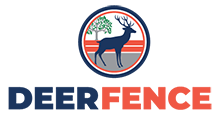Wild Pigs

Brought by Spanish explorers, wild pigs are now found in approximately 45 states (mainly in the lower United States) including: Alabama, Arizona, Arkansas, Florida, Michigan, Oregon, North Dakota, Georgia, Louisiana, Mississippi, Oklahoma.
While feral pigs are a problem in these states, Texas experiences the worst feral hog populations at 2 million pigs roaming throughout the state.
Wild Hog Diet
Feral pigs prey on livestock animals (goats, newborn cattle and lamb), small birds and reptiles for food; but luckily for them, there are few animals that are considered their predators. The diet of a wild pig consists mainly of plant matter and invertebrates such as worms and insects.
Crop Damage
Feral pigs in southern states cause crop damage and blows to landscapes. Farmers can always tell when feral pigs have been stomping on plants when they see damage to plant roots, nests, tree rubs and holes in the ground. Not only are these the signs of feral pig damage to plants, but it is a concern to equipment operators handling heavy machinery.
Wild Hog Management
Feral pigs cause over $1.5 billion annually to agricultural crops and the environment. Because of their girth, weighing in at 110-200 pounds, and the fact that they can run 30 mph, feral pigs can bulldoze through most livestock fences thus reaching chickens and other livestock animals. They can jump over fences less than 3 feet high and have even 'climbed out' of pig traps with walls of 5-6 feet high.
The best fence type for feral hog management is a strong metal fence, such as woven wire fencing, or electric fencing that is at least 3 feet high.
